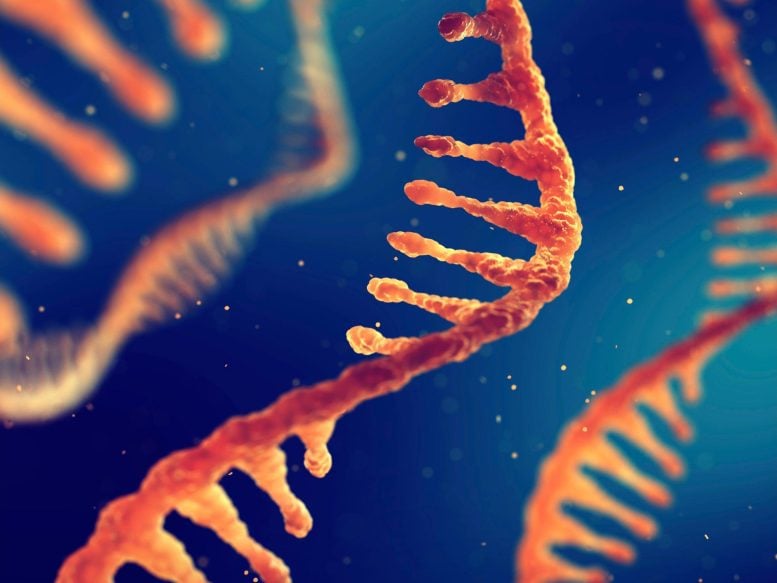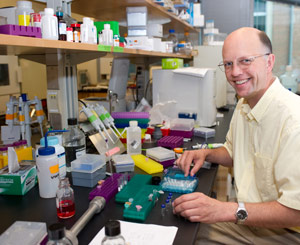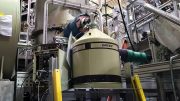
A recently released study examines a different explanation for the origin of RNA. It demonstrates highly organized self-assembly in water using small molecules resembling RNA bases, potentially shedding light on the emergence of early RNA-like polymers.
A newly published study explores an alternate theory for the origin of RNA, achieving highly ordered self-assembly in water with small molecules that are similar to the bases of RNA and possibly providing insights into the origin of the first RNA-like polymers.
The base pairs that hold together two pieces of RNA, the older cousin of DNA, are some of the most important molecular interactions in living cells. Many scientists believe that these base pairs were part of life from the very beginning and that RNA was one of the first polymers of life. But there is a problem. The RNA bases don’t form base pairs in water unless they are connected to a polymer backbone, a trait that has baffled origin-of-life scientists for decades. If the bases don’t pair before they are part of polymers, how would the bases have been selected out from the many molecules in the “prebiotic soup” so that RNA polymers could be formed?
Researchers at the Georgia Institute of Technology are exploring an alternate theory for the origin of RNA: they think the RNA bases may have evolved from a pair of molecules distinct from the bases we have today. This theory looks increasingly attractive, as the Georgia Tech group was able to achieve efficient, highly ordered self-assembly in water with small molecules that are similar to the bases of RNA. These “proto-RNA bases” spontaneously assemble into gene-length linear stacks, suggesting that the genes of life could have gotten started from these or similar molecules. The research is published online in the Journal of the American Chemical Society.

Nicholas Hud in lab. Credit: Georgia Tech
The discovery was made by a team of scientists led by Georgia Tech Professor Nicholas Hud, who has been trying for years to find simple molecules that will assemble in water and be capable of forming RNA or its ancestor. Hud’s group knew that they were on to something when they added a small chemical tail to a proto-RNA base and saw it spontaneously form linear assemblies with another proto-RNA base. In some cases, the results produced 18,000 nicely ordered, stacked molecules in one long structure.
“Thinking about the origin of RNA reminds me of the paradox of your grandfather’s ax,” said Hud, a professor in the School of Chemistry and Biochemistry. “If your father changed the handle and you changed the head, is it the same ax? We see RNA the same way. Its chemical structure might have changed over time, but it was in continual use so we can consider it to be the same molecule.”
Hud concedes that scientists may never be 100 percent sure what existed four billion years ago when a complex mixture of chemicals started to work together to start life. His next goal is to determine whether the proto-RNA bases can be linked by a backbone to form a polymer that could have functioned as a genetic material.
Georgia Tech partnered with the Institute for Research in Biomedicine in Barcelona, Spain on the project. The proto-RNA’s two-component, self-assembling system consisted of cyanuric acid (CA) and TAPAS, a derivative of triaminopyrimidine (TAP).
In addition to addressing the origin-of-life questions, Hud suggests the self-assembly process could be used in the future to create new materials, such as nanowires.
Reference: “Efficient Self-Assembly in Water of Long Noncovalent Polymers by Nucleobase Analogues” by Brian J. Cafferty, Isaac Gállego, Michael C. Chen, Katherine I. Farley, Ramon Eritja and Nicholas V. Hud, 8 February 2013, Journal of the American Chemical Society.
DOI: 10.1021/ja312155v
This project is supported by the National Science Foundation (NSF) and NASA (Award Number CHE-1004570), and by NASA Exobiology (Award Number NNX08A014G). The content is solely the responsibility of the principal investigators and does not necessarily represent the official views of the NSF or NASA.









The discovery of proto-RNA bases from water is an excellent discovery to prove that water is the elixir of life in all planets and that the primordial soup originated from mixture of water and amino acids to form the backbone of life. Moreover since the discovery of water in Moon, Mars and other planets speaks well of that.We should know that this water itself was embedded on the planets from the Oort Cloud which carry mountains of ice and stones and also methane etc., in the cometary belt which makes frequent visits to the planets on its way to the Sun. Naturally this gets entangled in gas giants like Jupiter, Saturn, Uranus and Neptune which are all ringed planets in the system. Bulk of the debris are entrapped in the asteroid belt beyond Mars and the bullets of meteors make pock marks in all inner planets and their moons as well in the form of craters. It is possible that entire oceans of the world were gifted by one such cometary impact carrying with it the primordial soup of life mixed with water. Our assumption gets more and more strengthened by this discovery of RNA proto pairs in water being formed. Thank You.